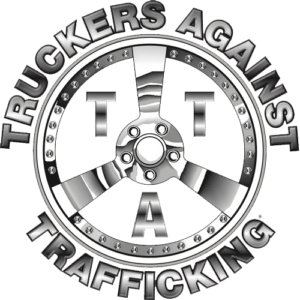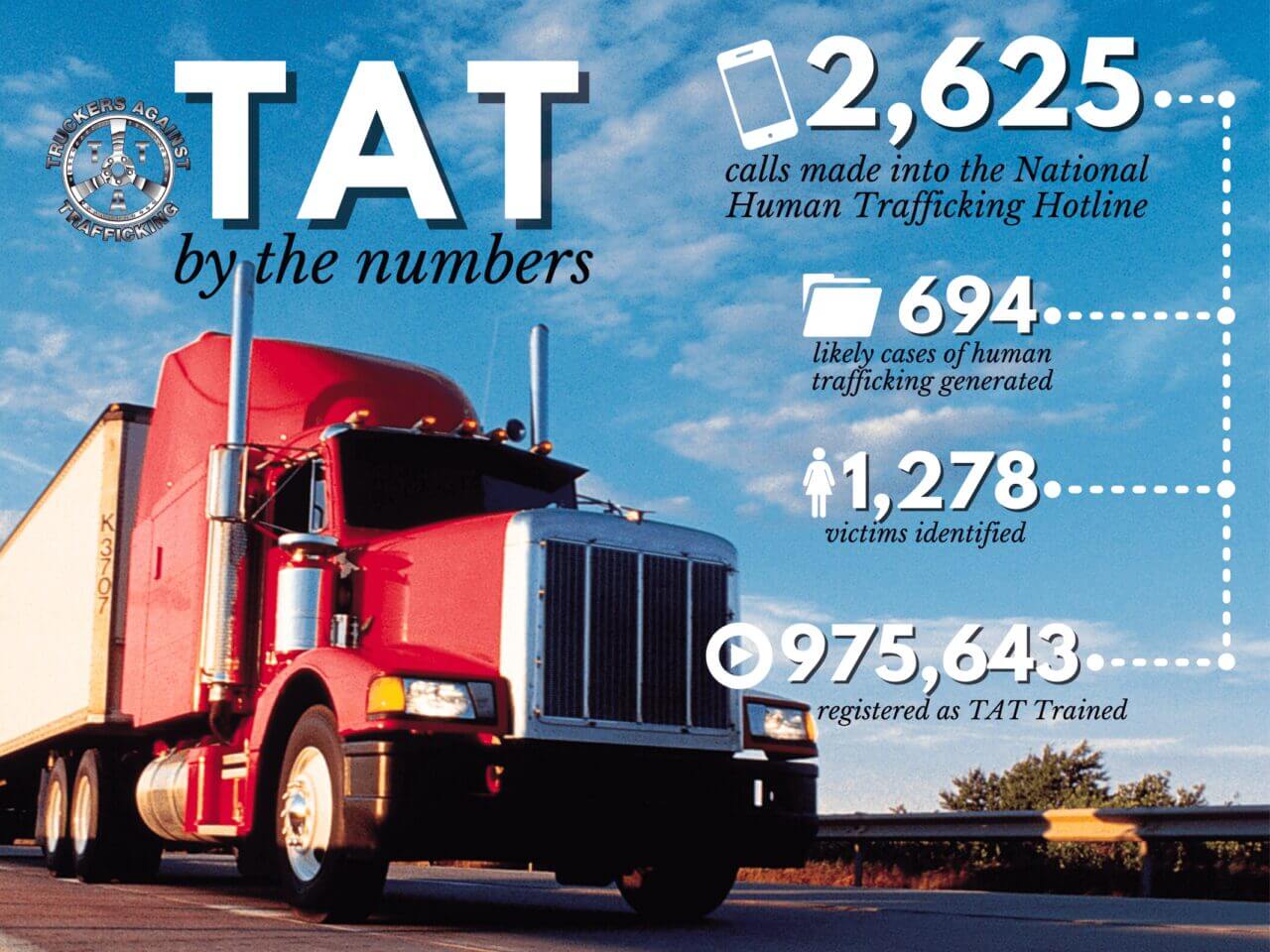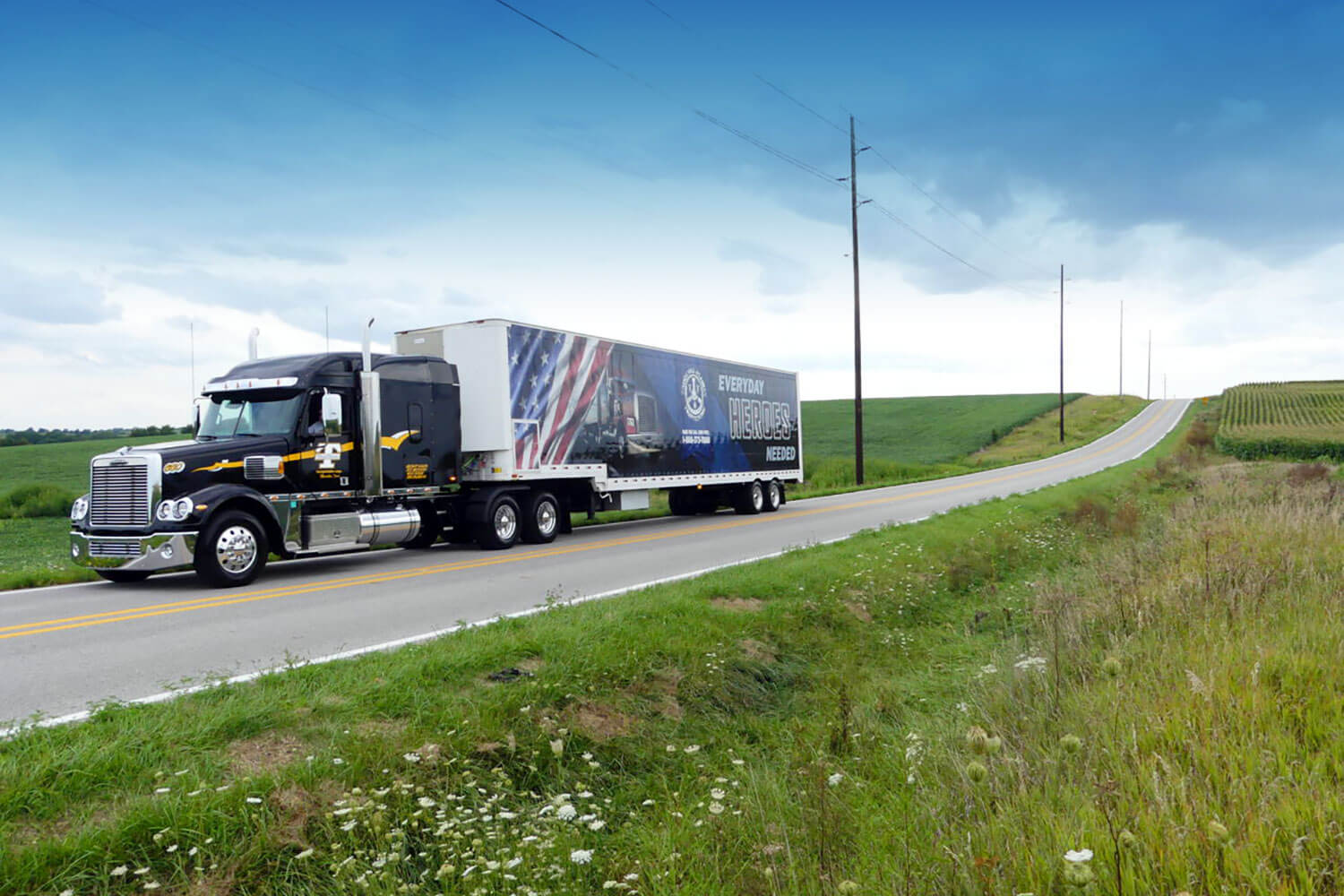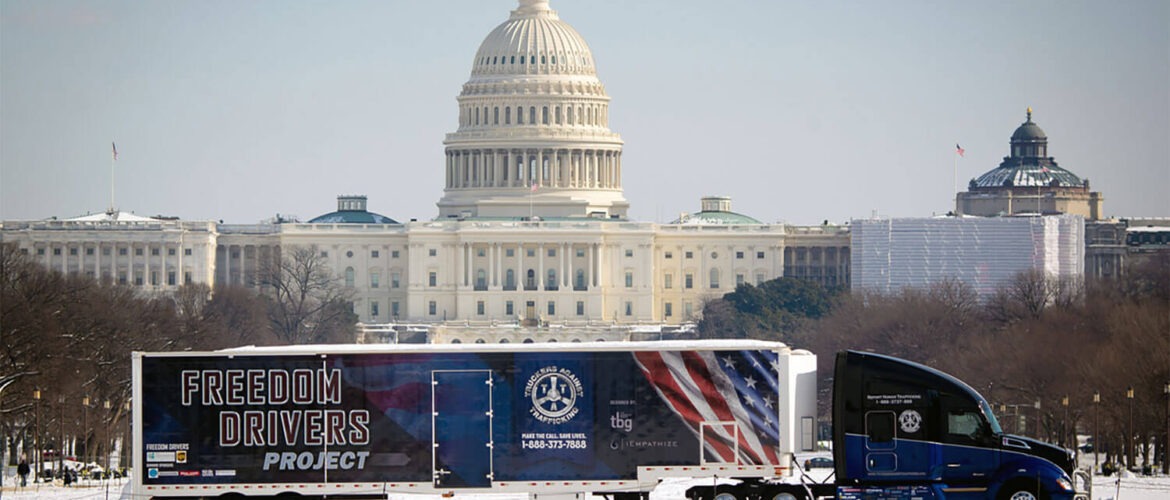Over 40 million young people worldwide are currently being trafficked. This crime exists in all 50 states in the United States. Fortunately, getting help for these victims has never been easier.
How Victims Become Victims
Traffickers exploit the transportation systems for their personal gain. They target young runaways, people who desperately need food or housing, or people who have a physical or mental disability. They use force, fraud, or coercion to make these vulnerable people do what they want them to do against their will.
Some of the victims are used for free labor, typically working in agriculture, construction, magazine sales crews, and in nail salons. But traffickers force the vast majority of victims into prostitution, brothels, pornography, strip clubs, and massage parlors. The captors make them more vulnerable and controllable by turning them into drug addicts and mothers. It’s a situation the victims feel powerless to escape.
 What Is the Truckers Against Trafficking (TAT) Program?
What Is the Truckers Against Trafficking (TAT) Program?
Truckers, bus drivers, and people in the energy industries have a unique opportunity to help trafficking victims because they frequently run across them. This led to the formation of Truckers Against Trafficking (TAT). TAT educates, equips, and empowers people to combat trafficking.
TAT’s goals are to:
- Saturate the various industries touched by this issue with TAT materials
- Partner up with law enforcement and others to facilitate investigations
- Combine partner resources to fight trafficking
TAT has videos, posters, window decals, brochures, wallet cards, and/or other informative materials special-made for the trucking, busing, energy, and casino businesses to get the word out. Law enforcement and on-demand materials are also available.
The trucking industry is partnering up with law enforcement all across the U.S. as the coalition builds. The AG’s office, DHS, AAMVA, OMVE, USDOT, and the FBI have also partnered up with the trucking industry to get the word out to victims that TAT exists for them. Many associations, companies, schools, and other organizations also support TAT.
TAT has many programs. The certification program for U.S. truckers is one of the main programs. TAT also trains law enforcement, shippers, bus drivers, people who work energy jobs, and Canadian truckers. Other TAT programs include coalition building, the TAT ambassador program, the freedom drivers project, state agency initiatives, TAT dealership partnerships, and model replication.
About the U.S. Trucker Training Program
The certification program teaches truckers how to spot and help trafficking victims, along with other information. TAT participants learn:
- How victims are used
- Who traffickers are
- How trafficked victims are targeted
- Control tactics traffickers use on victims
- How to identify trafficked individuals
- What phone number to dial to get help for the victims
- What phone number to dial to get the trafficker arrested
Some of the many signs that TAT training participants will learn to look for include:
- Runaways asking for money
- Another person answering questions for a suspected victim
- Bruises
- Wearing clothing that does not fit in with their location
- Wearing provocative clothing
- Minors selling their services – all minors are trafficking victims
With everyone carrying a cell phone, helping trafficking victims has never been easier. It is as easy as dialing a phone or using a hotline’s app. Participants are told “if you see something, say something.” They’re instructed to:
- First call 911 to get the police to come nab the trafficker/pimp
- Call the National Trafficking Hotline at (888) 373-7888 in the United States to get help for the victim.
The National Human Trafficking Resource Center (NHTRC) advertises the same hotline number. Callers can speak to an operator 24/7 in one of 200 different languages. Callers can also remain anonymous. TAT also has a Canadian hotline.

A Case Study
Recent statistics show that out of 2,625 calls made by TAT-certified people, 694 cases were generated and 1,278 victims were identified.
One of the many success stories that involve truckers helping is that of a young girl who was being forced to work as a prostitute. A TAT-certified trucker was sitting in his truck at a truck stop when saw the girl and her captor walking from truck to truck. When they approached his truck, he thought the girl was no older than 14.
Whether the girl saw the trucker’s TAT sticker or he mentioned he could help her is not clear. But when the girl had a moment alone with the trucker, she said she wanted to go home. Her owner observed from a distance that she and the trucker weren’t getting down to business. When the trafficker came back to the truck, the girl went silent. He then marched her over to the shower area, where she may have received a beating.
The trucker called the truck stop manager. The manager told him to call the TAT/NHTRC hotline phone number. He called the hotline number and explained the situation. TAT told him to call 911 and then to call them back.
Five cop cars quickly arrived. Cops arrested several males, including the girl’s 20-year-old captor. Authorities told the trucker that the child was a runaway from another state and that her owner had several outstanding warrants. Thanks to the trucker’s involvement, the girl was going to get help and her owner was going to jail.
TAT Program Effectiveness
TAT has become recognized at both the national and world level. TAT received the Congressional Award (the Suzanne McDaniel Memorial Award for Public Awareness) on April 22, 2015. This award was part of the annual Congressional Victims’ Rights Caucus Awards. The United Nations recognized TAT by including the organization in the UN’s 100 Best Practices list to combat human trafficking.
The U.S. federal government has mandated some high-trafficking states such as Kansas to require anybody getting CDL-certified or re-certified to be TAT-certified before CDL certification is granted. Trucking companies need to check the law in their state for the current status regarding a requirement for TAT certification.
Benefits of Using the TAT Program
Once victims are found by authorities, they receive medical treatment and their captors are incarcerated. Many of the rescued children have now grown up to become strong advocates for the TAT program.
The hero feels good about his involvement. His company is viewed as part of the solution rather than the problem, avoiding a possible bad-publicity scenario. But the rewards for truckers helping don’t stop there.
TAT gives the Harriet Truman Award to people who help combat trafficking. If you have called the hotline number and the incident resulted in a positive outcome, tell your company about it. Then visit tat.truckers@gmail.com and tell your story there. You will receive Indy 500 tickets plus $2,500.
It’s Easy to Participate
Truckers, bus drivers and others in the driving community can watch the training video, jot down the hotline number, and order a TAT window decal. That way, you’ll be ready to help.
You can tell other truckers and your employer about the program and hand them some marketing materials. You can get the training video upon request.
Never hesitate to call 911 and then the hotline if a situation looks suspicious. There’s no penalty for erroring on side of caution.
Sign up for TCI’s email list for more trucking-focused content like this.













